It’s safe. Fans of the first two Insidious movies can go to Leigh Whannell’s Insidious: Chapter 3 without fear, that is, without fear of crushing letdown due to a triple whammy: a new director; the current entry in the series being a prequel; and just being third in a series. In fact, my only complaint with this latest offering is the lack of the huge Insidious title across the screen with the industrial-strength violins working overtime at the end. That’s a very small complaint with a film where so much could have gone wrong. No doubt, what helps here is the fact that series co-creator and screenwriter Whannell has taken over the directing reins from James Wan. Whannell may not quite have Wan’s visual panache, but he’s been around enough to pick up the dynamics — and he certainly knows the material as well as or better than anyone. And once again, this new entry manages to fit in with — and elaborate on — the previous chapters.
The idea this time — and it’s a terrific one — is to examine the backstory of psychic Elise Rainier (the indispensable Lin Shaye) in an episode that falls between the 1986 prologue in Insidious: Chapter 2 (2013) and the events of the original Insidious (2010). Since Elise was the most interesting character in the other films — even post-mortem — building a film around her was a masterstroke. (And I doubt this is the last of her because the sequel set up in Chapter 2 — which is hinted at here — clearly incorporates ghost Elise. Being dead in this kind of movie is not necessarily an impediment to your screen time.) It also affords Shaye the biggest — and best — role of her career.
The central haunting here is being inflicted on recent high-school grad Quinn Brenner (Stefanie Scott from the Disney Channel) who — in between auditioning for drama school (for James Wan, no less) — has been trying to communicate with her recently deceased mother. This, of course, is a Bad Idea, because, as she soon learns from Elise, you can’t be sure who you’re really talking to and other things can come through. Though sympathetic to the girl’s plight, Elise has sworn off psychic work for reasons of her own — namely that there’s something in “The Further” that wants to kill her. This resolve to stay out of the spiritualism business starts to crumble as soon as Quinn’s position becomes truly dire — in other words life-threatening.
OK, in terms of plot, this is pretty much more of the same. In terms of characterization and intent, it differs somewhat. Whannell sticks to the shock-effect playbook — and delivers, if not the best, then the second-best jump scare in the series — but he’s also making a serious attempt at creating characters we can actually care about. This may just make Chapter 3 the most emotionally effective movie in the series. But there’s more. By moving the setting to what we may call an Old Dark Apartment House, he gives us a beautifully confined space — depending on the scene at hand — that recalls such films as Kubrick’s The Shining (1980) and Michael Winner’s The Sentinel (1977) — reconfigured, of course, to include the series’ trademark fog for The Further. And in so doing, he gives production designer Jennifer Spence a wonderfully creepy new space to work with. (How Spence can be so brilliant in these films and Rob Zombie’s The Lords of Salem but so bland in those Paranormal Activity things is, I suppose, a question to rival why Blumhouse Productions that aren’t signed by Wan, Zombie and now Whannell are so…wanting.)
When the lights came up after Chapter 3, fellow critic Edwin Arnaudin asked me if the Insidious films were now the first such series to go for three pictures without a drop in quality. I was shocked by the question, but even more shocked by the fact that I didn’t have an argument with that assessment. Even the original series films — Universal’s Frankenstein saga — take a dip on that third entry. And while the Child’s Play series actually recovers and becomes better afterwards, Child’s Play 3 (1991) just about finished the series for several years. Hell, most series falter on the second movie. I know it will wring some withers, but it just might be true that Messrs. Wan and Whannell have managed something no one else has. Rated PG-13 for violence, frightening images, some language and thematic elements.



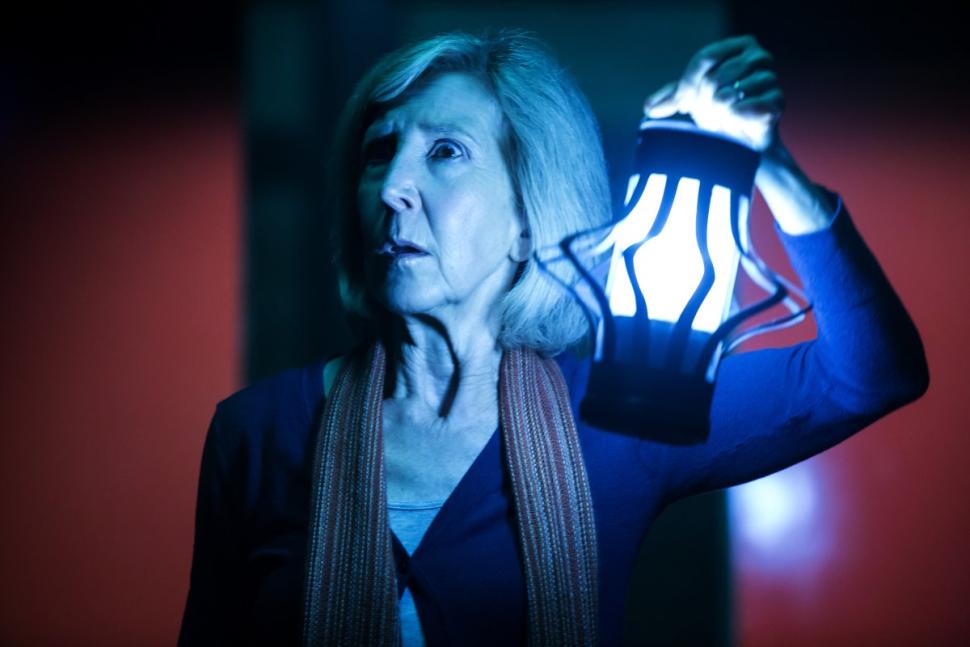
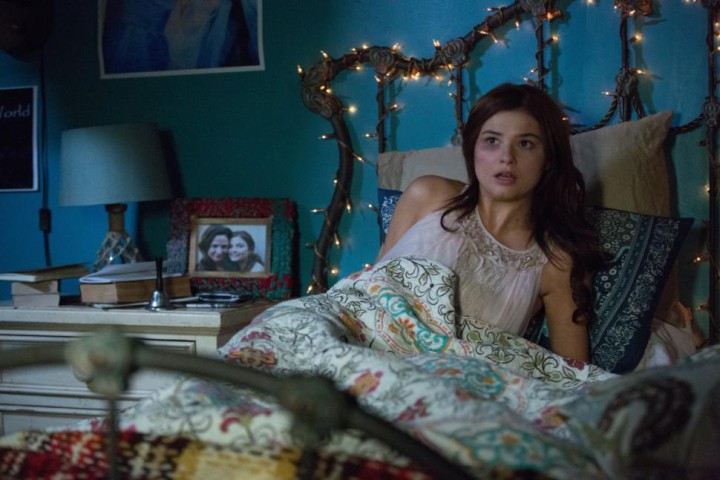
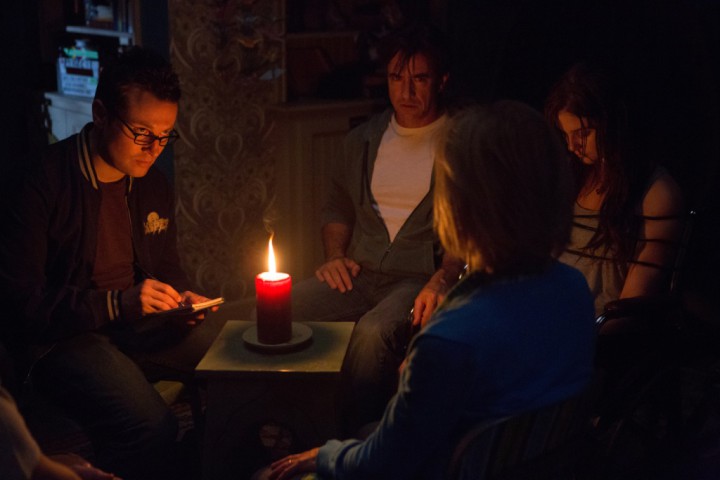

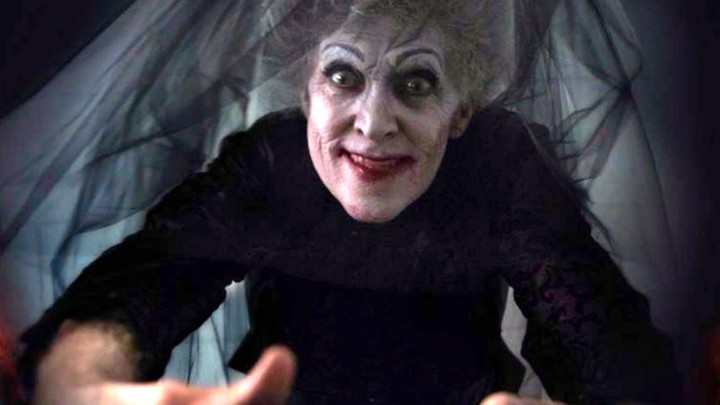
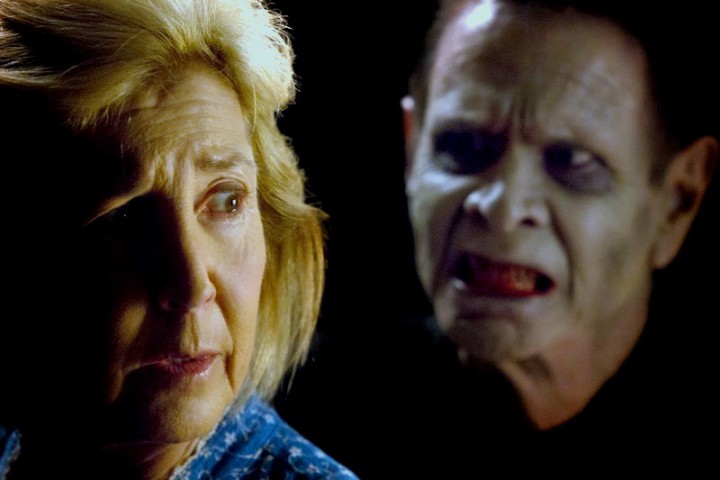
I haven’t seen any of these. Are the older ones worth it?
That’s a rhetorical question, right?
It’s either rhetorical, or he wants an answer without the bother of reading the review…
…or the other two’s reviews…
Touché . I avoid spoilers. Don’t read reviews until after seeing something unless I don’t care about seeing it.
I see. An informed viewer. (I wish to Clapton the word “spoiler” was stricken from the lexicon. If a movie that isn’t a mystery or doesn’t have some twist can be “spoiled” because you know the basic story, that movie pretty much sucks already.)
I avoid spoilers. Don’t read reviews until after seeing something unless I don’t care about seeing it.
I meant it more as “see how many stars Ken gave those films and maybe read ‘The Lowdown’ critical capsule, too,” especially since I can relate to holding off on reading reviews.
If a movie that isn’t a mystery or doesn’t have some twist can be “spoiled” because you know the basic story, that movie pretty much sucks already.
For me, this comes down to where one would like to have one’s discovery of a film occur. If it’s through a mix of reviews/articles and then seeing the movie, that’s OK. I prefer to discover a film as wholly as possible on the screen, taking in the story with the filmmaking. I also try to reach that point by having only encountered trailers and brief pro-/anti- sentiments on social media concerning that film.
We are very different. I think it has a great deal to do with when we grew up.
After hearing about how informative publicity used to be, I think so, too.
Well, it seems curious coming from someone who is far more interested in festival and internet “buzz” than I am.
But what I was really referring to has nothing to do with publicity and everything to do with access. I cannot even begin to count the number of movies the very existence of which I would not have been aware of without reading about them — especially classic cinema. If you didn’t read about movies in books in the ’60s and ’70s, you wouldn’t know about them. This is also true of all but the most mainstream titles, especially if you lived in a town of 5,000 in the middle of nowhere. It actually extends into the ’80s. If I hadn’t read about Nightmare on Elm Street and Re-Animator in the Village Voice, I wouldn’t have known about them. Oh, sure, you bumped into things on occasion — usually on TV or at a University — but I’d say this was more the exception than the rule. So really this “perfect ignorance” in approaching a movie is so foreign to me that I find it incomprehensible.
The flip-side to this is my firm belief that the biggest problem with movies today is that everybody “knows” too much about them — or think they do — and is convinced of a thing’s value long before they see it.
I find the festival and internet “buzz” beneficial in alerting me to films I’d not heard of and giving me a little more info on ones I was already anticipating, but I rarely go beyond those basic details.
I can’t think of the last new release I saw where I went in knowing nothing about it, but I do try to control how much I know beforehand. That’s the formula that works for me.
We are very different indeed. I consider internet and festival “buzz” a complete turn-off and of no more value than an IMDb rating, but actual reviews don’t bother me. Though goodness knows I’ll often be drawn to a film because the bad reviews frequently make it sound like something I might like.
Well, the “buzz” is from reviewers – I just rarely read their full accounts.
Well, you could, of course, go to see movies with no idea what they are — “Give me a ticket to whatever’s new.” I am often surprised by people who go to a theater without a clue beyond “going to see a movie.” At the same time, we have people who show up every Tuesday to see whatever we’re showing. (They may regret this with A Zed and Two Noughts.)
Of course, I have no option but to know a good bit about what’s opening every week just to be able to do the “Reeler.” The only time I even have a hope of pure surprise is with screenings.
It seems as though I took issue with a couple more things than either you, Ken, or you, Edwin, did, but overall I left the theater largely satisfied. Chapter 3 was both scary and fun (which in itself ought to be enough to garnish more critical approval than it has– so many horror films are neither of these things) and, maybe most importantly, still feels fresh, even as the third installment in the series. You’re both right to stress what an achievement that really is.
Pretty great that in the same film we get two very strong turns from two lead actresses separated by more than 50 years of age.
Would you perhaps say what you took issue with? I had one thing, but felt it kind of made sense further on.
I thought the way the characterization of the father was handled was rather weak. The whole stressed out, outta touch, doesn’t know his teenage daughter is a vegetarian dad shtick is something we’ve seen before and here it felt clumsy and clichéd. I think Whannell just tried to be too economical about it all so that we can get back to the scares. It’s as though he wanted to cram everything we need to know about the strained father/daughter dynamic into three lines of dialogue or less, so we end up with a quinoa joke, and a bit of head scratching over “kids and their technology” and little else to make Sean Brenner feel like anything other than a character on a page. I’m not wild about Mulroney anyway, and there was nothing in the early going to change that for me, though both he and his character did get stronger in later scenes.
Another complaint came toward the very end of the film in a scene that I thought was just garbage and desperately needed to be reworked, since scrapping it altogether isn’t an option for Whannell and the film’s purposes. I’m talking about the scene that sets up the partnership between Elise and Tucker and Specs. That awkward medium-low angle single take shot behind the van just looked flat out amateurish and much of the dialogue within felt forced and cringe-inducing. It doesn’t bother me as much now that I’m away from the film– I think because I’m pretty sure I like the spirit of the scene, but certainly not the execution. I groaned while watching it, in part because it seemed at the time that the movie was a little too pleased with itself. I don’t know that I, or anyone else, really wonders why Specs and Tucker wear white shirt and black ties. We’re not talking about Jules and Vincent here. The characters and their wardrobe just aren’t that iconic. But the movie was more than happy to solve this mystery that never really was. Ah, but then again, the Insidious series is pretty damn great and maybe it’s earned the right to celebrate itself a bit, self-insisting on a sort of cult fascination with Specs and Tucker.
Oh, and I kept waiting for
— and this contains possible SPOILERS–
Quinn, after she’s brought back, to scream agonized expletives, or at least acknowledge the excruciating pain her legs must have been in after all they went through. Besides the oversight in logic, it was, if nothing else, a missed opportunity to call back to mind one of the most effective scenes in the whole film.
It’s interesting that none of these things even occurred to me to be bothered by. On the other hand, I expected more of a payoff with the neighbors than the film delivered. And at one point I began to question if they’d just forgotten about the kid brother, who just seemed to disappear, but then he re-appeared and his disappearance was mentioned — and when he left the film again, you knew why. Of course, I’m not sure he actually serves any real function other than to get Specs and Tucker into the proceedings.
Chapter 3 was both scary and fun (which in itself ought to be enough to garnish more critical approval than it has– so many horror films are neither of these things) and, maybe most importantly, still feels fresh, even as the third installment in the series.
Obviously, I agree. What bothers me is that it’s not as highly regarded as It Follows or mothercussing Unfriended, allegedly for not being as “original” or “daring,” though neither is much fun. (I also don’t recall being pleasantly rapt with fear of when the next scare would happen in either.) I think a lot of critics and viewers see the “3” and immediately write it off or figure it will offer significantly diminishing returns, which is a shame.
It’s probably not as original as It Follows, but it’s easily as good and taken as a group of three movies becomes even more. Unfriended, on the other hand, is just the latest wrinkle in the moose-fellation orgy called “found footage.” (Just being The Blair Snot-Cam Project should be a jailible offense, but for what it spawned, it merits capital punishment.) And you overlook the automatic write-off awarded to horror movies not rated R. Even some of the good reviews for Insidious: Chapter 3 makes reference to “tweens on a Friday night” as the target audience.
Hello, I enjoy your reviews (Ken) and – (being about the same age – if that matters) agree with you a majority of the time. However, I do disagree with you about Insidious ‘chapter 3’. I couldn’t even finish the second one and this ‘prequel’ was almost as vapid and childish as the last. I mean, the dead meanie who couldn’t breath in the ‘dead zone’ without an oxygen mask (???). I do applaud the lack of CGI as I’ve become tired and bored with it’s overuse… but it just lacked substance and any sense of dread IMHO. It Follows – in contrast – was terrific!!! ‘Viewed twice and enjoyed it even more on the second watch. (BTW – watched Rope last evening – agreed: excellent! I loved the comic conversation… “Did you see that movie – oh – ‘something and something – staring ‘someone’ — sounded like me ;-)
If you’d disliked the second — especially to the point of not finishing it — I’d never have suggested you undertake it. (I’d loved the second.) I liked It Follows, especially on a second look, but it really isn’t staying with me, which slightly surprises me and makes me doubt the need for another viewing.
That we’re about the same age is significant at least to the extent that we stand a fair chance of having a similar frame of reference, though that’s deceptive since so much of my frame of reference is drawn from things made years and years before I was born.
The “something and something starring someone” is much like my wife asking things like, “There’s this movie. There’s a house in it. Do you know what it was?”